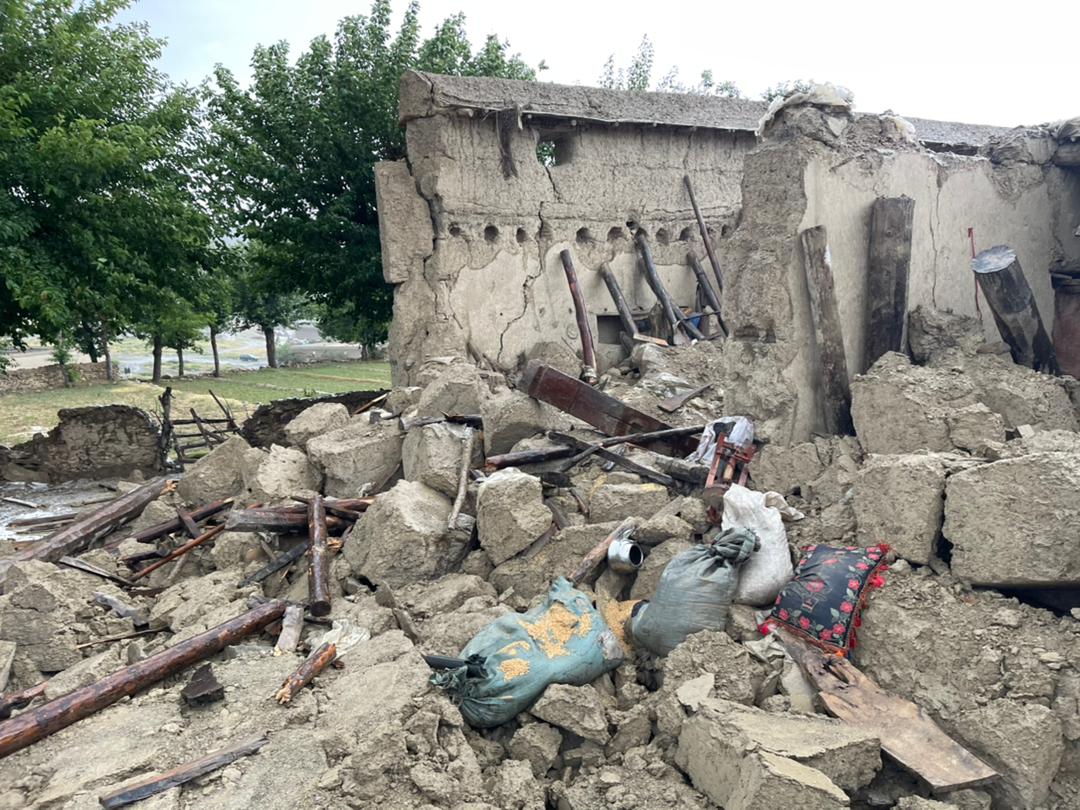Rebuilding homes destroyed by the Afghan earthquake – CDP announces $715,000 in recovery grants

Afghanistan is the site of a decades-long complex crisis, one that has been fueled in part by conflict, the increasing effects of climate change and deepening levels of poverty passed on from one generation to the next.
Afghanistan’s complex humanitarian and hunger crisis has been called “the worst humanitarian crisis on Earth”, with the United Nations (UN) saying that 24 million Afghans now require humanitarian assistance and 95% of the country is not getting enough to eat. With the whole country facing high levels of chronic poverty and food insecurity, communities are not resilient. They are almost entirely unable to withstand sudden-onset shocks, such as the earthquake that struck the country on June 22, 2022.
In response, the Center for Disaster Philanthropy reached out to local actors to determine critical unmet needs and gaps in long-term recovery in the most devastated areas of Afghanistan. These actors, which include our existing partners, informed our recent grantmaking in the region.
A disaster on top of an ongoing crisis
Afghanistan is prone to earthquakes, with an average of 560 deaths per year.
A 5.9 magnitude earthquake hit eastern Afghanistan on June 22, 2022. The hardest-hit areas were Gayan, Nika, Barmal and Zirok in Paktika province. More than 119 million people across a 310-mile zone, including Afghanistan, Pakistan and India, felt the earthquake’s tremors.
According to the UN Office for the Coordination of Humanitarian Affairs, of 14,052 houses identified as requiring emergency shelter assistance, 53% of homes were confirmed destroyed, 46% were severely damaged and 1% were moderately damaged. At the time of assessment, more than 40% of affected families were found to be living in open spaces or makeshift settlements. Additionally, 98% of families reported that they had lost, destroyed or damaged household items. Further, 58% reported insufficient water and 95% reported open defecation.
By August 26, 2022, 376,000 people had been reached with at least one form of assistance, including food and agricultural support, emergency shelter and household items, protection, multi-purpose cash assistance, water, sanitation, health and hygiene.
Most urgent and critical unmet recovery needs
The initial surge of funding covered these basic needs, but three months after the earthquake struck, the greatest unmet needs were the repair and rehabilitation of damaged and destroyed homes.
Shelter has consistently been identified as the most underfunded sector for recovery in Afghanistan (and this is often the case in most disasters). With the harsh Afghan winter approaching and families living outside, CDP determined that homes are of the most critical and urgent need to address.
CDP’s recovery programming and partnership approach
In September, we selected two trusted partners with expertise and a previous track record for quality in construction that would be able to start working on repairing homes before the looming harsh winter.
Each partner organization adopted different design approaches – one targeting individual household-level structures and the other targeting compound structures with multiple families and agriculture and livelihood assets within these walls. Both grantee partners have demonstrated excellent engineering technical capacity. They are core members of the shelter cluster working group in Afghanistan, regularly providing inputs to and advocating for improvements to UN- and government-approved shelter designs. These improvements seek to incorporate elements that would respect local culture and heritage, be cost-effective, enhance the protection of women, provide reinforcement to be more earthquake resistant in the future, and reduce pre-existing conflict risk in the communities.
Programs included a cash-for-work component involving local households, engineers, masons and laborers, and a capacity-strengthening component, which contributes to local community knowledge, empowerment, replicability and sustainability.
Targeted households included those who were poor, marginalized, conflict- and earthquake-affected, including those that were women-led and those with children, older adults and family members with disabilities.
Grants awarded for Afghanistan’s earthquake recovery
- Concern received a $500,000 grant from CDP to reconstruct 105 of the most severely damaged and destroyed homes housing 756 vulnerable individuals and household-level water and sanitation facilities for the most vulnerable affected families.
- Miyamoto Global Disaster Relief received a $215,000 grant from CDP to repair 15 family compounds damaged or destroyed by the earthquake, leading to shelters that are more resilient and better winterized. The repairs will support more than 90 families (approximately 500 people) using a compound reconstruction approach, which meets the urgent shelter recovery needs of multiple families while providing privacy and protection, and restoring the dignity and safety of women, girls and other vulnerable populations within the compound.
Learnings and leverage
Between these two shelter projects adopting different designs and approaches, we will be able to document learnings, which will be shared with the broader shelter community for adoption and further replication in earthquake-affected areas.
